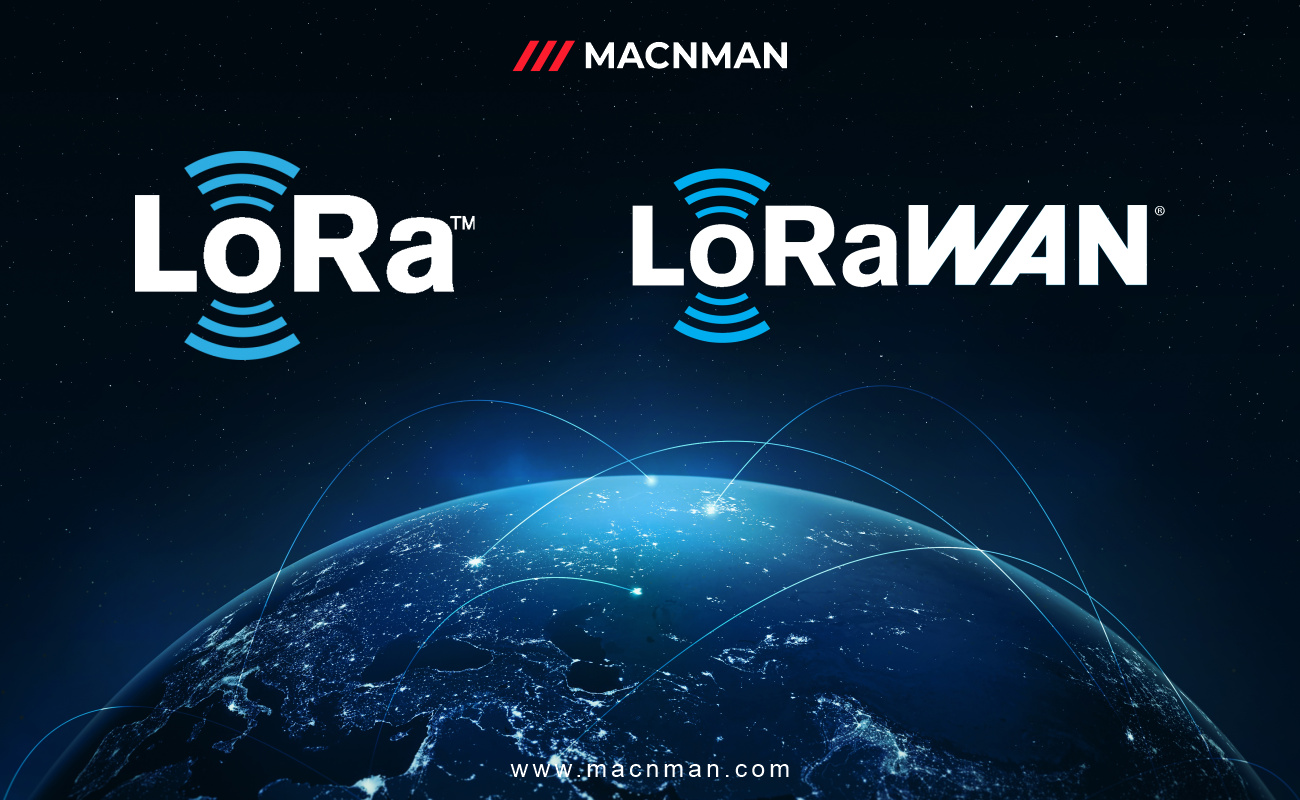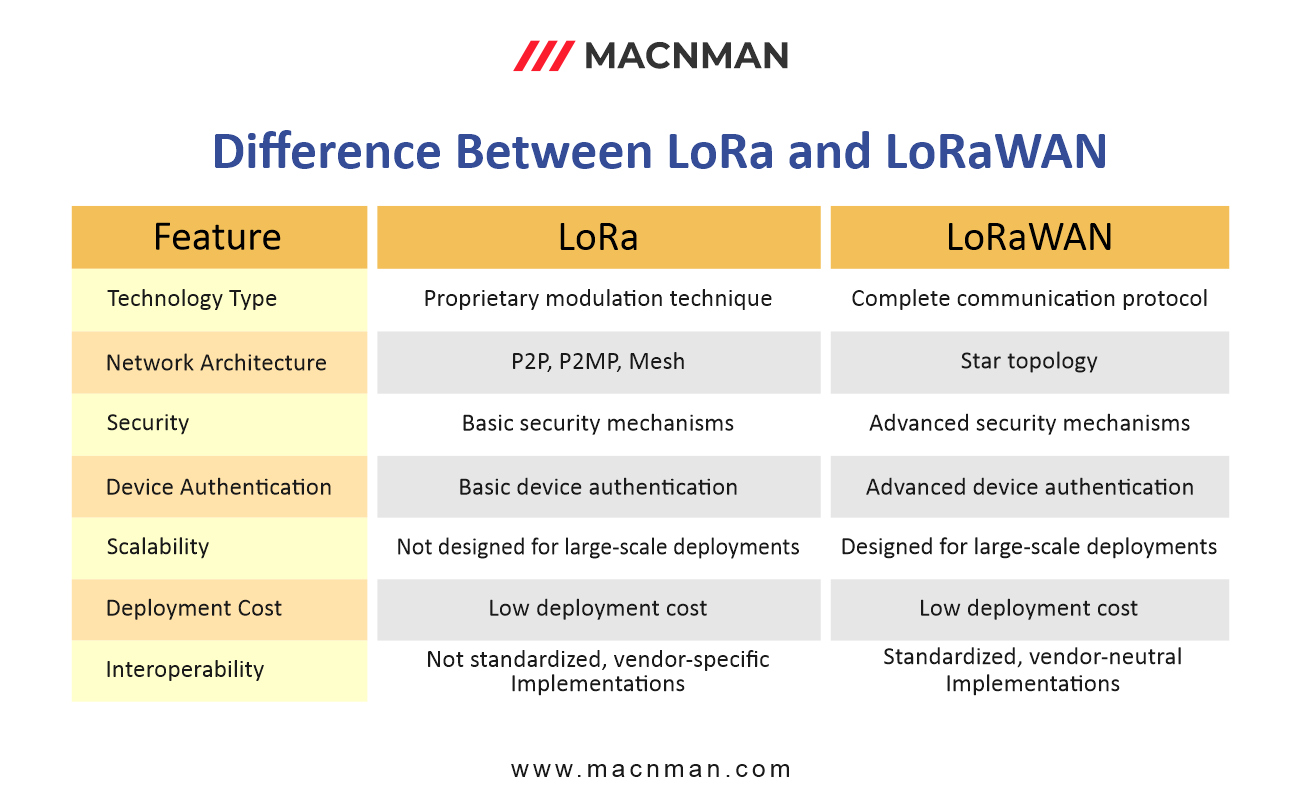
Introduction:
As the Internet of Things (IoT) continues to grow, the need for reliable and efficient communication between devices has become more important than ever. One of the technologies that have emerged to address this need is LoRa, which stands for Long Range. LoRa is a wireless communication technology designed to transmit data over long distances, using low power and low data rates. However, there is often confusion between LoRa and LoRaWAN, which are two different things. In this blog, we'll explain the differences between LoRa and LoRaWAN, and help you make the right choice for your IoT devices or project.
What is LoRa?
LoRa is a proprietary wireless communication technology. It uses a chirp spectrum modulation that allows transmitting data over long distances, while using very little power. LoRa operates in the unlicensed radio frequency (RF) spectrum, which means that it can be used by anyone without needing to obtain a license. LoRa is designed to be used in low-power, wide-area networks (LPWANs), which are networks that can cover large geographical areas with low power consumption.
To function properly, LoRaWAN gateways must be strategically placed to ensure maximum coverage of the network. Each gateway can cover a range of several kilometers in a line-of-sight environment, but the range can be limited by obstacles such as buildings and terrain. Multiple gateways can be used to extend the coverage area of the network, and the gateways can be connected to the internet via Ethernet, Wi-fi, or cellular connections.
LoRaWAN gateways use the LoRa modulation technique to transmit and receive data. LoRa is a proprietary modulation technique that allows data to be transmitted over long distances using low power and low data rates. LoRaWAN uses different classes of devices, each with different power consumption and transmission requirements. Class A devices are the most common and use the least amount of power, but can only receive data from the gateway during specific windows of time. Class B devices have a more predictable receive window and can receive data on demand, while Class C devices are always listening and can receive data at any time.
What is LoRaWAN?
LoRaWAN is a network protocol that is built on top of the LoRa technology. It is designed to enable IoT devices to communicate with each other and with the internet. LoRaWAN is an open standard that is maintained by the LoRa Alliance, which is a group of companies that are working together to promote and develop the technology. LoRaWAN provides features such as security, data encryption, and device authentication, which are essential for IoT devices & networks. It uses Lorawan gateways & nodes to operate.
LoRaWAN gateways and LoRaWAN technology are closely related, as the gateways are an essential component of the LoRaWAN network. LoRaWAN technology is a wireless communication protocol that is designed for low-power, wide-area networks (LPWANs). It uses the LoRa modulation scheme to enable long-range communication between IoT devices and gateways.
LoRaWAN gateways serve as the bridge between the IoT devices and the LoRaWAN network. They receive wireless transmissions from LoRa-enabled devices and forward them to a central network server using the LoRaWAN protocol. The gateway also receives data from the server and sends it to the IoT devices. The gateway ensures that the data is transmitted reliably and securely by acting as a mediator between the devices and the network server.
Difference Between LoRa and LoRaWAN:

Making the Right Choice for Your IoT Device or Project:
When choosing between LoRa and LoRaWAN for your IoT devices or project, it's important to consider your specific requirements. If you only need to transmit data over long distances, and don't need to connect to the internet, then LoRa may be the best choice for you. However, if you need to connect your devices to the internet and provide additional features such as security and device management, then LoRaWAN is the way to go. LoRaWAN also provides greater scalability, which means that it can support a larger number of devices than LoRa alone.
Conclusion
LoRa is a wireless communication technology that is used to transmit data over long distances, while LoRaWAN is a network protocol that is used to connect devices to the internet. When choosing between LoRa and LoRaWAN for your IoT devices or project, it's important to consider your specific requirements and choose the technology that best meets your needs.